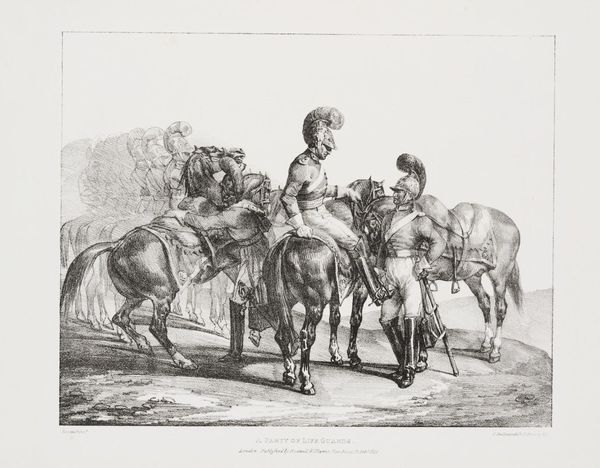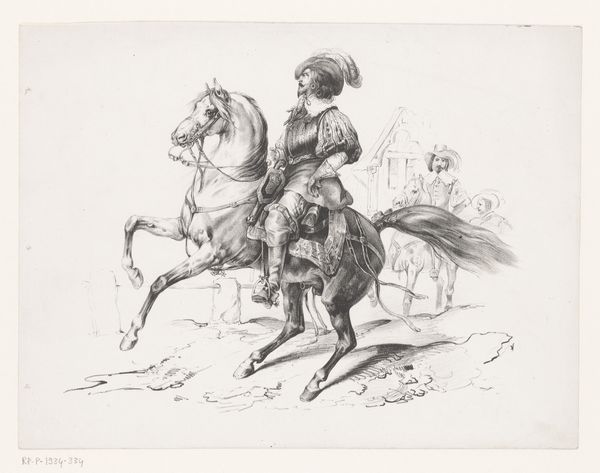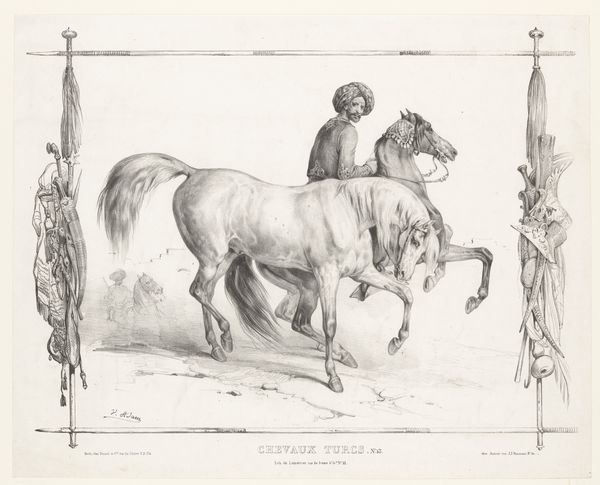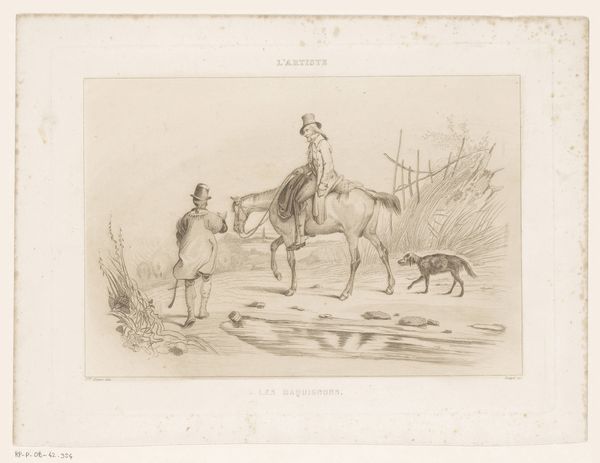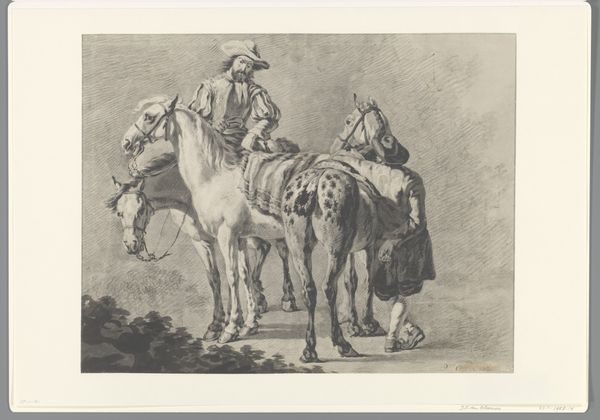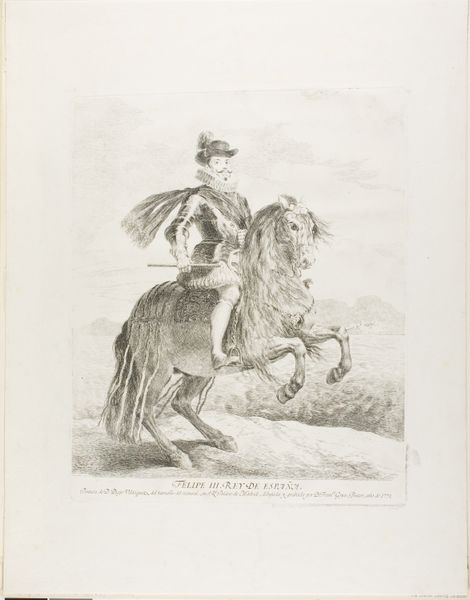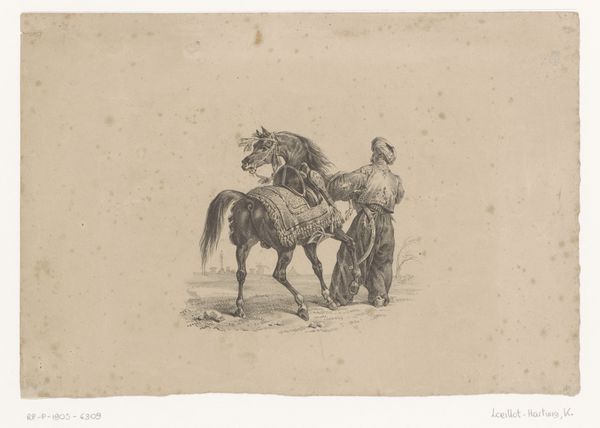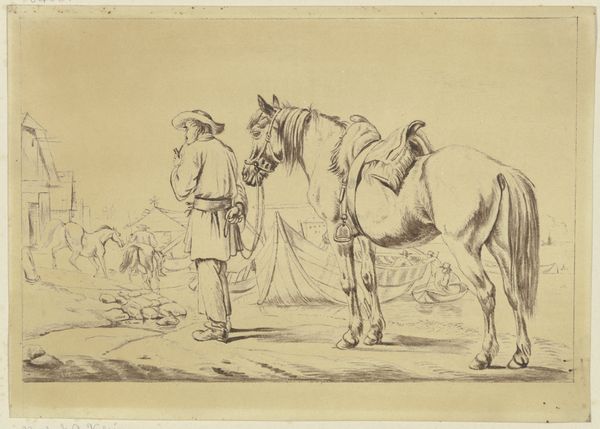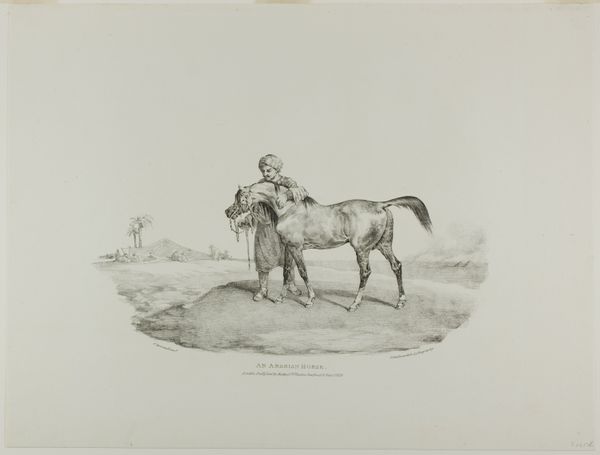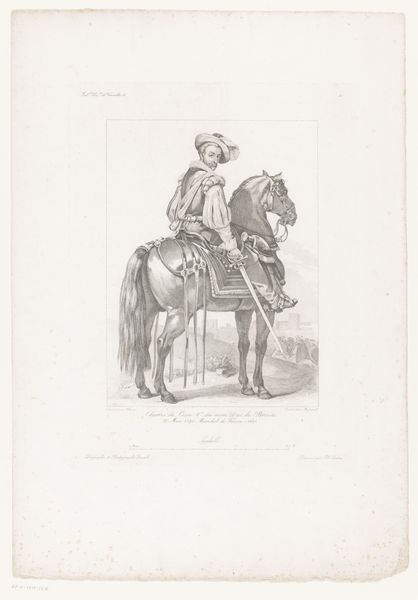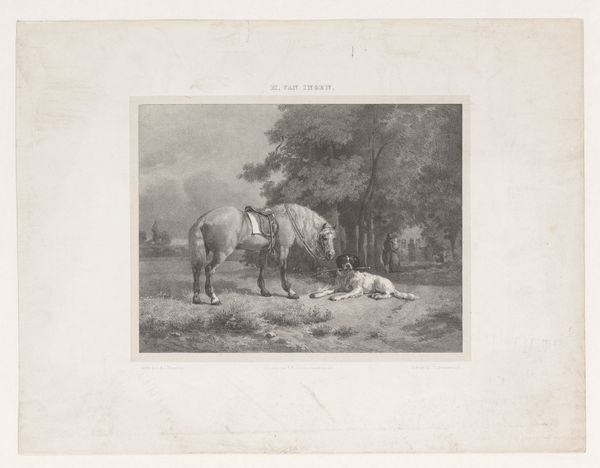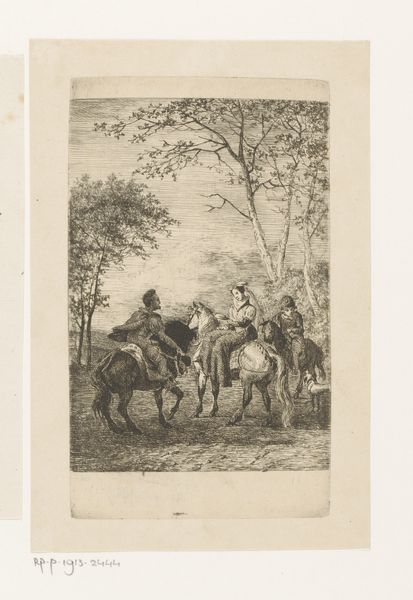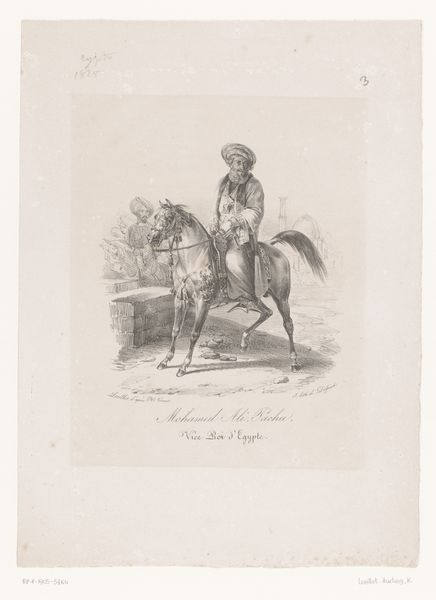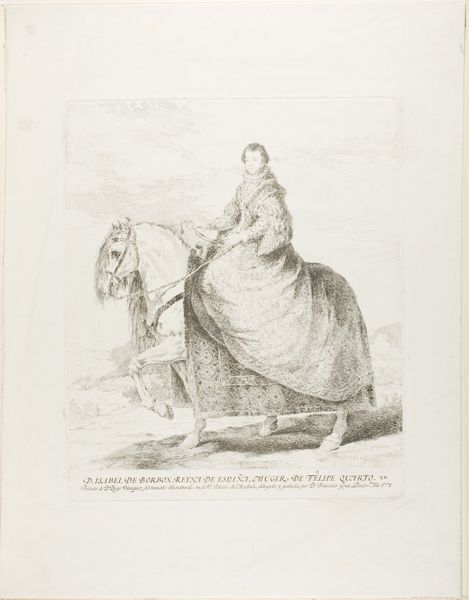
A Party of Life Guards, plate 5 from Various Subjects Drawn from Life on Stone 1821
0:00
0:00
drawing, lithograph, print, paper
#
drawing
#
lithograph
# print
#
paper
#
group-portraits
#
romanticism
#
history-painting
Dimensions: 274 × 343 mm (image); 373 × 496 mm (sheet)
Copyright: Public Domain
Editor: So, this lithograph, "A Party of Life Guards" by Théodore Géricault, dating from 1821 and residing at the Art Institute of Chicago, feels… very regimented. The way the guards are lined up suggests a mass-produced, almost impersonal quality. What do you make of it? Curator: I think that's a perceptive starting point. We see here a lithograph, a process dependent on specific materials: the stone, the grease crayon, the paper. Géricault isn't just depicting guards; he's engaging with the burgeoning print industry. It allowed for relatively cheap reproduction, transforming art from unique object to a commodity. Think about the social implications— who had access to images and information shifts dramatically. What effect do you think that had on contemporary understanding of military power or social hierarchy? Editor: Hmm, so you're suggesting the choice of lithography is key. Does that mean that Géricault may have been commenting on the commodification of military figures, even satirizing the spectacle of military display? Curator: Precisely! And let's not overlook the role of labor. While Géricault was a trained artist, the lithographic process involved skilled printers. This challenges the Romantic idea of the lone genius, pushing us to consider the collaborative aspects of art production and who controls the means of making art. What impact might Géricault's choices here have had on other artists who followed? Editor: That’s fascinating. I hadn’t thought about the labor aspect, just the image itself. It does give me a different perspective. Curator: Indeed. This wasn't just about romanticising soldiers. It was a commentary on the way art, like military strength, was being produced and consumed in early 19th-century France. Editor: So I see it's about understanding the bigger socio-economic forces at play within the artwork itself, and its mode of creation. Thanks for illuminating this. Curator: My pleasure. Looking through this lens opens up exciting avenues for further exploration, moving beyond purely aesthetic appreciation toward a deeper, material understanding of art.
Comments
No comments
Be the first to comment and join the conversation on the ultimate creative platform.
